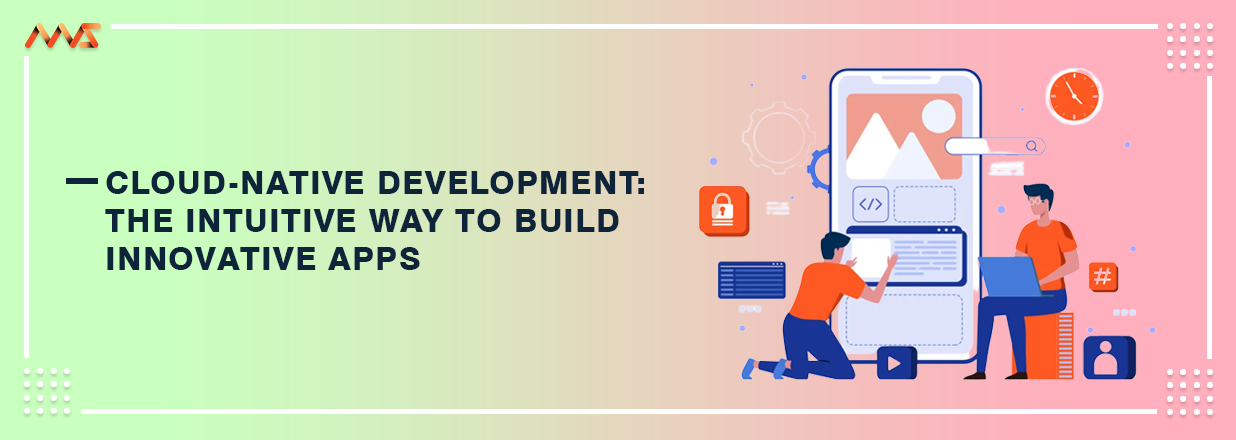With many software development options on the development market, choosing the right one for your product and business is required. Selecting a comprehensive technology like cloud-native development revolves around project requirements, resource availability, etc. Thorough research and good decision-making can help bring your product idea to market.
Multi-cloud, PaaS, agile development, microservices, CI/CD, DevOps, and containers are just a few of the cutting-edge technologies used in cloud-native computing. You will learn about the advantages and effectiveness of cloud-native development here.
What is Cloud-Native? - Description and History
An effective method for creating and executing programmes that use the advantages of the cloud computing delivery mechanism is called "cloud-native." Cloud-native applications are developed and deployed on a public cloud rather than a data center that is housed on-site.
Businesses are interested in learning how Netflix's extraordinary success and capacity to provide customers with more functions faster has benefited from cloud-native design.
At its core, the phrase "cloud-native" refers to a method for accelerating the development of your product and technology to organize your marketing strategy so that it may benefit from the scalability and automation offered by cloud-native tools.
Cloud-Native: Development and Architecture
Microservices vs. Monolithic Architectures
The biggest issue with monolithic architecture is that it is difficult to deliver newly developed functionality to development once constructed and tested.
- Coding changes made by different teams need to be coordinated.
- It took a lot of functional testing and upfront integration to deploy many features at once.
- The limitation is using only one or two programming languages and frameworks applied to development teams.
Containerization prevents friction between coding frameworks, libraries, or technologies. It is easy to create a microservices architecture using containers and move them to a different environment if necessary because containers are completely portable and can run independently.
Automated Releases
The next stage is to automate deployments once apps are orchestrated in Kubernetes and operating in containers. DevOps is distinguished from numerous other software development philosophies and practices, such as the waterfall model, in which the entire development process follows a systematic order of stages by a constantly automated features flow.
Container Orchestration
Once you have a sizable number of microservices running in Docker containers, you need a suitable method of managing or orchestrating these containers so that your app makes sense. Here, an orchestrator like Docker Swarm or Kubernetes is required.
Culture Modification
The success rate of integrating cloud-native technologies and DevOps best practices into your business heavily depends on the current organization's culture. Making the actual transition to cloud-native may be the best part of your trip, yet, getting those changes to stick and spread throughout your firm may be the most challenging aspect.
Cloud-Native Vs On-Premises Applications
Traditional programming languages like C/C++, C# and enterprise Java are frequently used to create on-premises applications that operate on corporate servers. More often than not, web-centric programming languages like HTML, Java, CSS, JavaScript, Go,.NET, Node.js, Python, PHP, and Ruby are used to create cloud-native applications. When you want to get the top engineers to work for your firm, development with contemporary programming technologies and platforms can be helpful.
Cloud-Native: Some Important Advantages
More Flexible And Effective
Cloud-native apps benefit from cloud agility by making consumption flexible and relying entirely on demand. However, on-premises apps require you to deploy additional infrastructure to scale efficiently physically and affect cost. The cloud allows you to pay only for what you use and avoid costly over-provisioning of infrastructure (most likely in theory).
Adaptability And Renewability
Each cloud-native application is built to be easily recoverable, available, and regularly updated. On-premises apps, on the other hand, are typically updated once or twice a year using a waterfall method. The upgradability of cloud-native computing makes development teams more productive, so they can focus solely on their competitive advantage and deliver the latest features to their customers more often than ever before.
Improved reliability And scalability
On-demand cloud bursting or elastic scaling provides nearly limitless scaling of computing, storage, and a variety of other resources. Organizations can take advantage of built-in scalability to meet demand profiles without the need to deploy or plan additional infrastructure. DevOps and GitOps best practices provide product owners with a low-risk method of rolling back changes, paving the way for innovation. It also speeds up disaster recovery from cluster collapses by allowing you to perform clean rollbacks. Extreme uptime guarantees mean there is a lot of competition within the company.
Takeaway
This report on cloud-native development and its benefits will thoroughly explain how it can improve your business productivity. By implementing such rich technology, you can achieve your desired business goals. All you have to do is keep the entire development process motivated and enable your development team to perform at their best and create stunning cloud-native apps.


